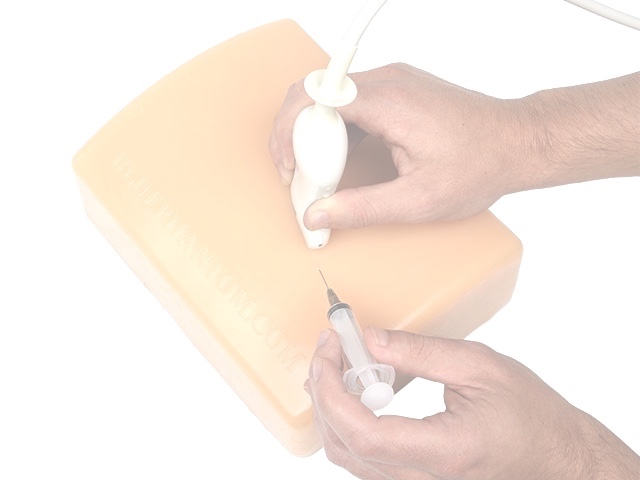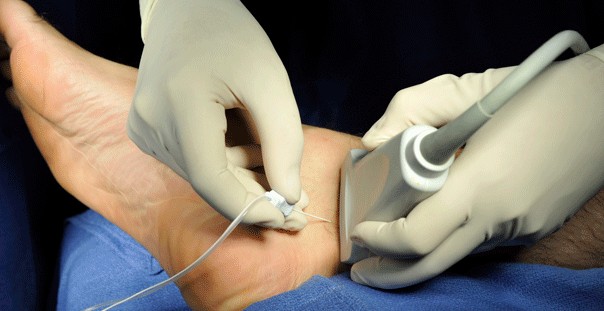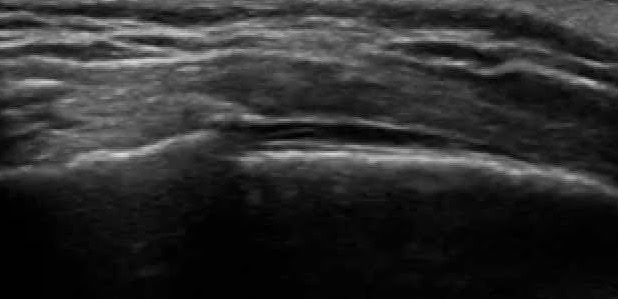HOW TO GET THE MOST FROM THE RVI
This guide, developed by Dr J Womack, summarises the opportunities in Regional Anaesthesia available at our centre, and how to make best use of these during your time with us...
As a major trauma centre and a regional hand injury unit there is significant opportunity at the RVI to develop skills in regional anaesthesia. Some of these opportunities may not be immediately obvious so a broad awareness of the curriculum and our set up will help you to maximise your experience. We offer intermediate, higher and advanced regional training blocks and basic can easily be achieved.
Unusually for a hospital the size of the RVI there is almost no elective lower limb arthroplasty work which means that the regional anaesthesia service is quite different to most hospitals in the region, more diffuse and not concentrated in a single ‘block room’.
TOP TIPS
- R E A D
- the curriculum and identify your training needs
- the curriculum and identify your training needs
- I D E N T I F Y
- opportunities based on the lists you have been assigned (see below)
- P R E P A R E
- B E E N T H U S I A S T I C
- Seek out learning opportunities (use the rota app to see who's doing what, where)

WHICH BLOCKS SHOULD I CONCENTRATE ON?
| N O V I C E | N E X T S T E P S | E X P E R T |
|
- TRUNK BLOCKS (TAP / RECTUS) -PECS -FASCIA ILIACA / FEMORAL -SCIATIC |
-BRACHIAL PLEXUS -ANKLE -SERRATRUS PLANE -ERECTOR SPINAE |
-PARAVERTEBRALS -CATHETER TECHNIQUES
|
*REGIONAL ANAESTHESIA PHONE 21806 - SPECIFIC REGIONAL ANAESTHESIA CONTACT BETWEEN 8 - 5 MON - FRI*
Use this dedicated Regional Anaesthesia DECT number if you have a patient requiring a block or catheter insertion for an acute pain intervention, such as rib fractures.
It will be held during standard hours. Out of hours and especially at weekends, look on the CLW rota app to see if someone skilled in regional techniques can help. Please see the list at the end of this page.
PLASTICS TRAUMA
Every weekday afternoon there is a plastics trauma list which consists primarily of hand surgery.
The list takes place in 2-3 theatres (9, 10, 10a) which are located in the day case ward (ward39).
The list is generally finalised at 1130 to 1200. The majority of patients are admitted to ward 39, and will already be expecting to have the procedure performed under regional anaesthesia.
If possible it is best to attend the list from 1130 (although this may be difficult with your morning list) and liase with the consultant. The busiest period is from midday until around 1500 as the blocks are being performed.
ACUTE PAIN / TRAUMA ANALGESIA
F A S C I A - I L I A C A
P A R A V E R T E B R A L
C A T H E T E R S
Increasingly we are involved with the provision of fracture analgesia. The aspiration is for referals to be streamlined through the regional anaesthesia phone but this is in its infancy so either PINC or the trauma anaesthetist may also receive them. Out of hours the referral will be made to PINC. It is not necessarily expected that the PINC anaesthetist will be able to provide this service but they can at least identify someone who can help.
We aim to provide fascia iliaca blocks (or catheter if the appropriate expertise is available) after admission for all patients with fractured neck of femur. Our preferred technique is the suprainguinal fascia iliaca for which guidelines exist, but clearly any form of analgesia which you are familiar with in the night is the most appropriate.
Patients with rib fractures will be referred for consideration of paravertebral catheter. A relatively small pool of anaesthetists can provide this, and at weekends there may not be anyone available.
We also have some experience of providing indwelling catheters for a variety of other acute pain indications. The referral is usually made by the acute pain team to one of the regional anaesthetists.
There is an orthopaedic trauma list every day in theatre 32 (level 5 NVW). There is often opportunity for regional anaesthesia, and in general the surgeons are happy for patients to have blocks.
BREAST SURGERY
P A R A V E R T E B R A L
I N T E R P L E U R A L
C H E S T W A L L B L O C K S

Both plastic and general surgeons perform breast surgery at the RVI. The general surgical patients receive a combination of regional anaesthesia and TIVA as standard and many of the plastics cases also receive the same. Generally patients undergoing mastectomy receive either a paravertebral or an interpleural block depending on the preference of the anaesthetist. There also may be opportunity to learn PECS or serratus for axillary procedures.
ELECTIVE ORTHOPAEDICS
I N T E R S C A L E N E +/- C A T H E T E R
A N K L E B L O C K
We have two shoulder surgeons (Williams and Aldridge) and most patients receive an interscalene block. The Tuesday afternoon list (NVW 35) is usually reserved for awake shoulder surgery with an indwelling ambulatory catheter.
There is some foot and ankle surgery generally on Mr Fearon’s list.

PAEDIATRIC REGIONAL ANAESTHESIA
F E M O R A L / F . I
P O P L I T E A L
C A U D A L
E P I D U R A L

There are a number of paediatric orthopaedic lists (usually Tuesday and Wednesday in theatre 27). The majority of cases are lower limb procedures and regional anaesthesia is often used. Caudals are also widely used across the paediatric theatres.
OTHER OPPORTUNITIES
| E L E C T I V E P L A S T I C S | G E N E R A L S U R G E R Y | O B S & G Y N A E |
|
Most hand surgery is performed under regional anaesthesia, and blocks can be performed on most plastics list. |
Upper and Lower GI Epidural / Paravertebral / Rectus Sheath Other trunk blocks As with many other centres epidural analgesia is gradually falling out of favour although it is often still used for the major upper GI cases. Increasingly a variety of trunk blocks and intrathecal opiates are used. |
GA Sections Qudratus Lumborum TAP block Abdominal wall blocks are often used for both gynae and obs procedures.
|
THE TEAM
In addition to the Group of Regional Anaesthetists (see About Us), there are other anaesthetists at the RVI who are able to provide regional anaesthesia techniques.
These anaesthetists are:
Dr Karen Simpson (consultant)
Dr Ifti Parvez (SASG)
Dr Karen Naru (consultant)
Dr Sachin Rastogi (consultant)
Dr Sarah Metcalf (consultant)
Dr Steve Thomas (consultant)
Dr Neil Cardno (consultant)
Dr Chitra Garg (SASG)
Dr Conor Gillan (consultant)
Dr Lynn Waring (consultant, paeds)
Dr David Pachter (consultant, paeds)
Dr Claire Watkinson (consultant, paeds)
SIGN OFF
Sign off can be requested from Dr Jonathan Womack.
Visit the Sign Off page for more information.